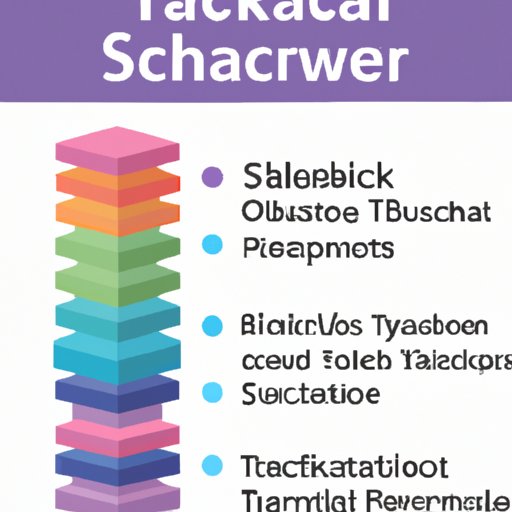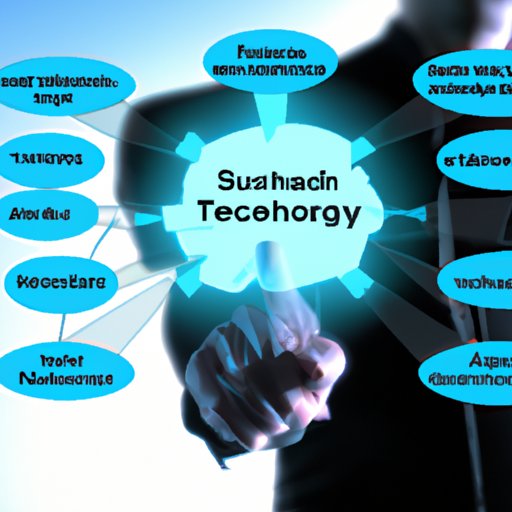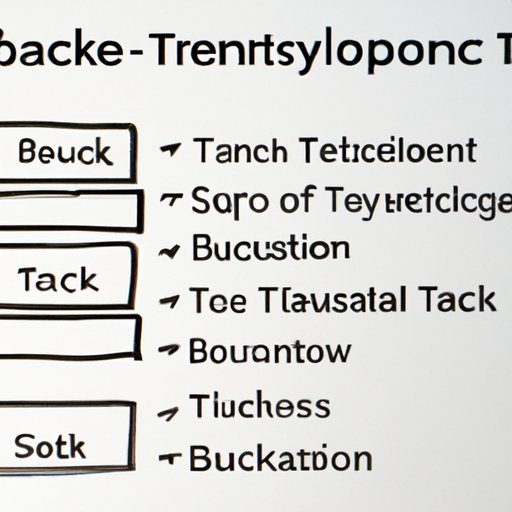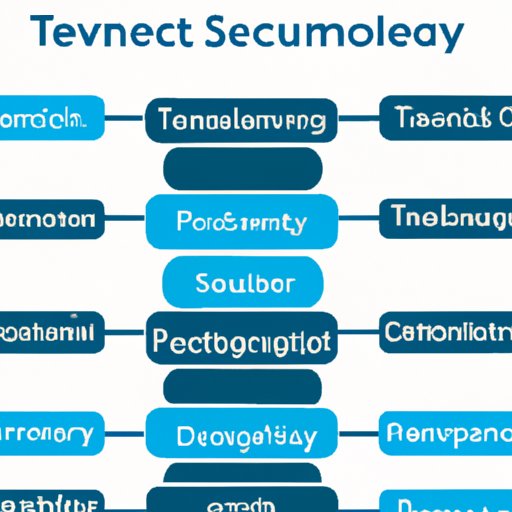Introduction
The term “technology stack” has become increasingly popular in recent years as businesses have recognized the importance of selecting the right combination of technologies for their operations. But what exactly is a technology stack and how can it benefit a business?
A technology stack, also known as a solutions stack or a software stack, is a set of software components that are used together to provide a complete solution. It’s important to note that the components of a technology stack can vary depending on the specific needs of the business. In other words, there is no one-size-fits-all approach when it comes to technology stacks.
Choosing the right technology stack for your business can be a daunting task. Therefore, it is important to understand the various components and technologies that make up a technology stack, as well as the different types of technology stacks and the benefits they offer.
Exploring the Technology Stack: What Is It and How Does it Work?
At its core, a technology stack is a combination of hardware, software, and services that enable a business to operate efficiently. It includes everything from the operating system and server to the programming language and database management system. Depending on the complexity of the application, the technology stack can include a variety of components such as web servers, development frameworks, databases, and content management systems.
In order to understand how a technology stack works, it’s important to understand the different components that make up the stack. These components can be grouped into three main categories: client-side technologies, server-side technologies, and databases.
Client-side technologies refer to the technologies that are used by the user in order to interact with the application. Examples of these technologies include HTML, CSS, JavaScript, and AJAX. Server-side technologies refer to the technologies that are used to power the application, such as PHP, ASP.NET, Ruby on Rails, or Java. Finally, databases refer to the technologies that are used to store and manage data, such as MySQL, Oracle, or MongoDB.

A Guide to Understanding Technology Stacks
Now that you have a better understanding of the components that make up a technology stack, it’s time to explore how to choose the right technology stack for your business. The first step is to identify your business needs. Consider what type of application you need to build and what kind of data you will be working with. This will help you narrow down your options and determine which technologies will best meet your needs.
Once you’ve identified your business needs, the next step is to research your options. There are a variety of technology stacks available, so it’s important to do your due diligence and compare the different options. Look at reviews from other users and consider the pros and cons of each option. Additionally, it’s important to consider the cost of each technology stack and whether or not it is within your budget.
Finally, it’s important to discuss the benefits of different technology stacks. Each technology stack offers different benefits, such as improved scalability, cost savings, and enhanced security. By understanding the benefits of each technology stack, you can make an informed decision and select the best option for your business.
An Overview of Technology Stacks and Their Benefits
Technology stacks offer a variety of benefits to businesses. One of the most obvious benefits is cost savings. By using a technology stack, businesses can save money by eliminating the need to purchase, install, and maintain multiple applications. Additionally, technology stacks can help businesses scale faster, as they allow developers to quickly deploy new features and updates.
Improved security is another major benefit of technology stacks. By using a technology stack, businesses can ensure that their applications are secure and compliant with industry regulations. Additionally, technology stacks can help businesses reduce the amount of time and effort required to maintain their applications.
Finally, technology stacks can help businesses improve their productivity. By providing an integrated environment, technology stacks make it easier for developers to collaborate and develop applications faster. Additionally, technology stacks enable businesses to deploy applications more quickly, reducing the time to market.

Choosing the Right Technology Stack for Your Business
Choosing the right technology stack for your business can be a challenging task. However, by taking the time to analyze your requirements and compare different solutions, you can make an informed decision and select the best option for your needs. Here are some tips to help you choose the right technology stack for your business.
First, analyze your requirements. Consider the type of application you need to build and the data you will be working with. This will help you identify the technologies that will best meet your needs.
Next, compare different technology stacks. Look at reviews from other users and consider the pros and cons of each option. Additionally, consider the cost of each technology stack and decide if it fits within your budget.
Finally, make an informed decision. Once you’ve done your research, you can make an informed decision and select the best technology stack for your business. Be sure to keep in mind the long-term implications of your choice, as this will help you maximize the benefits of your technology stack.

The Basics of a Technology Stack: What You Need to Know
Understanding the basics of a technology stack is essential for businesses looking to make an informed decision. Here are some key points to keep in mind when selecting a technology stack.
First, understand the core components of a technology stack. This includes the operating system, server, programming language, and database management system. Additionally, it’s important to understand the different technologies used in a technology stack, such as HTML, CSS, JavaScript, and AJAX.
Second, find the right balance of technologies. Depending on the complexity of the application, it may be necessary to use multiple technologies in order to create a complete solution. When selecting a technology stack, it’s important to ensure that all of the components work together seamlessly.
Finally, it’s important to understand the benefits of a technology stack. As mentioned earlier, technology stacks can offer a variety of benefits, such as cost savings, scalability, and improved security. Understanding these benefits can help you make an informed decision and select the best technology stack for your business.
Conclusion
In conclusion, technology stacks can be a powerful tool for businesses looking to increase efficiency and reduce costs. By understanding the components and technologies that make up a technology stack, as well as the different types and benefits offered, businesses can make an informed decision and select the best technology stack for their needs.
By identifying your business needs, researching your options, and discussing the benefits of different technology stacks, you can ensure that you select the best technology stack for your business. With the right technology stack in place, your business can take advantage of cost savings, scalability, and improved security.
Summary of Key Points
• A technology stack is a set of software components that are used together to provide a complete solution.
• The components of a technology stack can vary depending on the specific needs of the business.
• Technology stacks offer a variety of benefits to businesses, such as cost savings, scalability, and improved security.
• When selecting a technology stack, it’s important to identify your business needs, research your options, and discuss the benefits of different technology stacks.
Final Thoughts on Choosing the Right Technology Stack
Choosing the right technology stack for your business can be a difficult decision. However, by understanding the components and technologies that make up a technology stack, as well as the different types and benefits offered, businesses can make an informed decision and select the best technology stack for their needs.
(Note: Is this article not meeting your expectations? Do you have knowledge or insights to share? Unlock new opportunities and expand your reach by joining our authors team. Click Registration to join us and share your expertise with our readers.)
